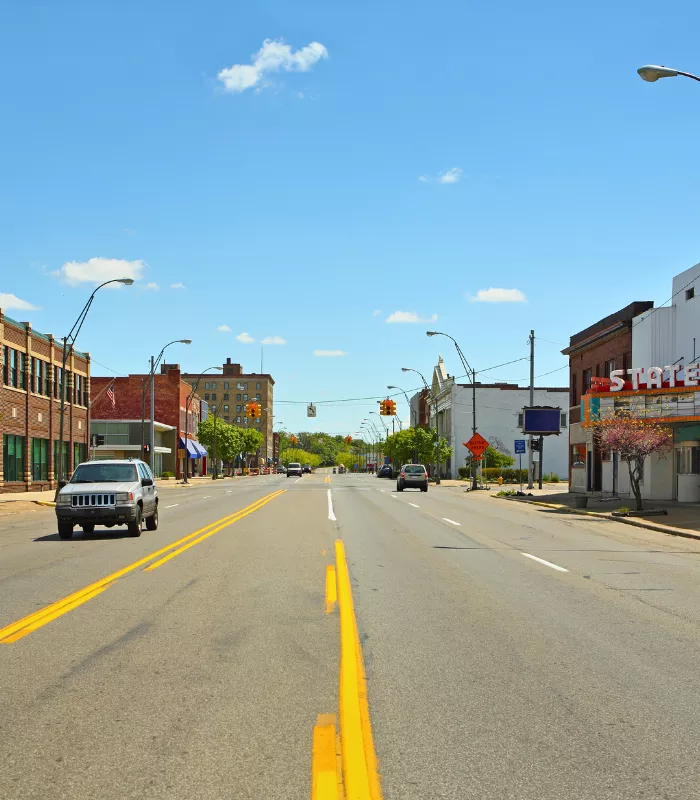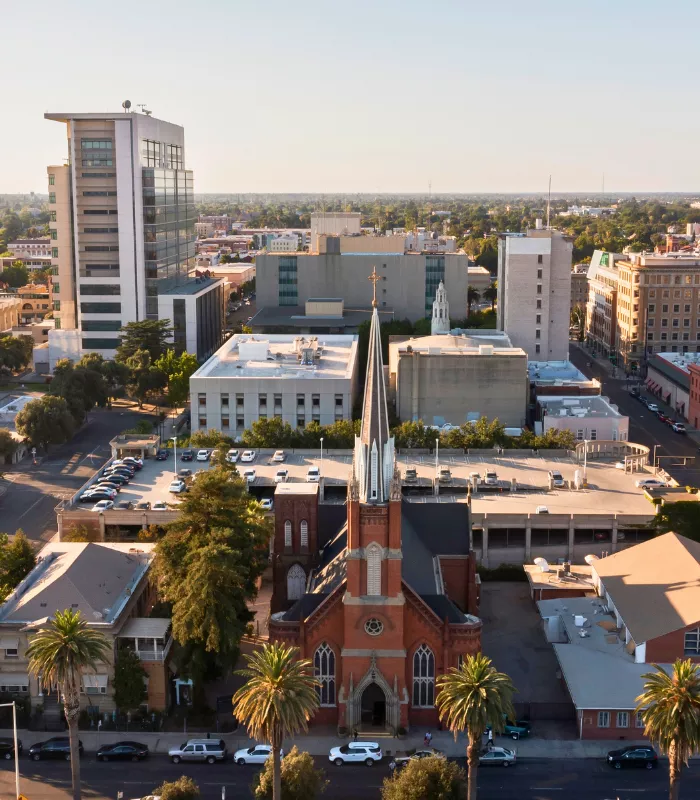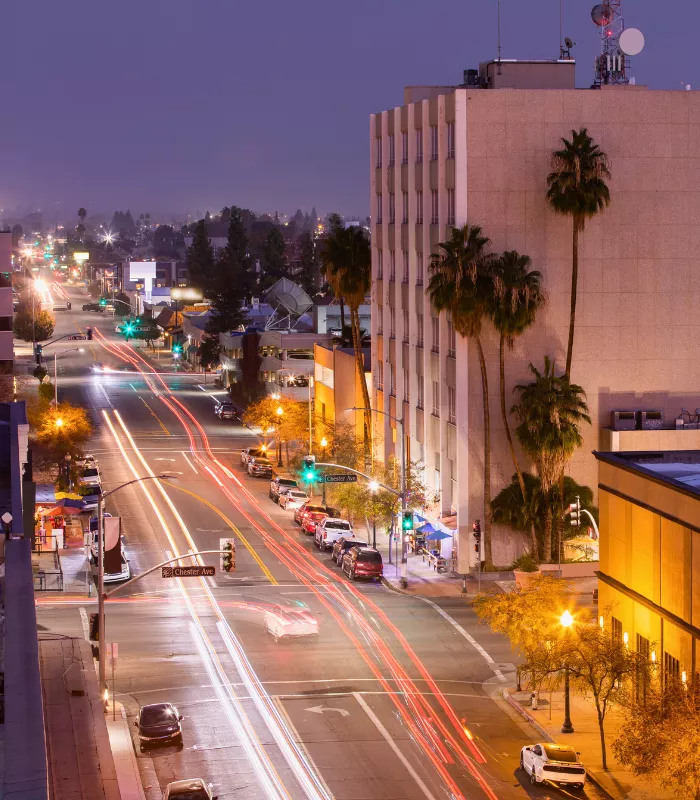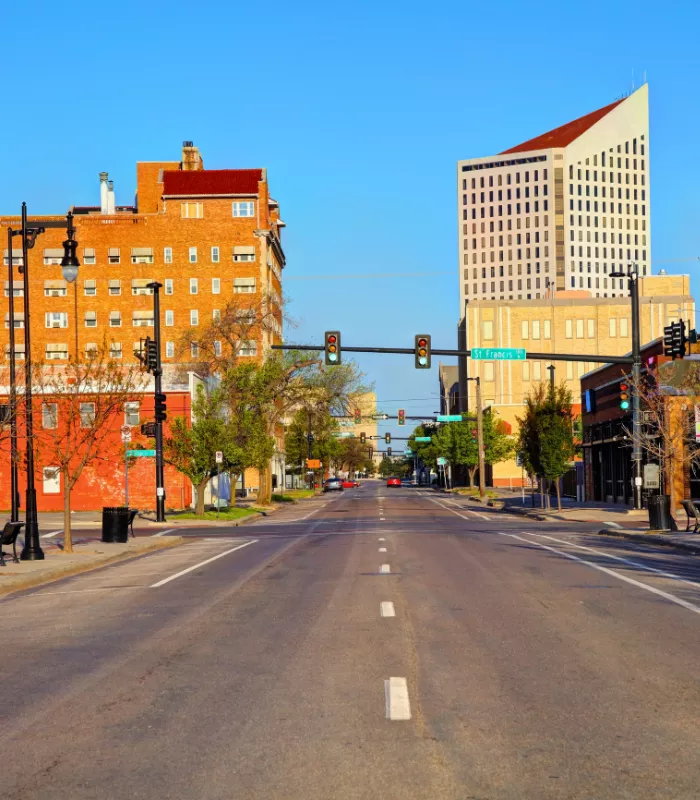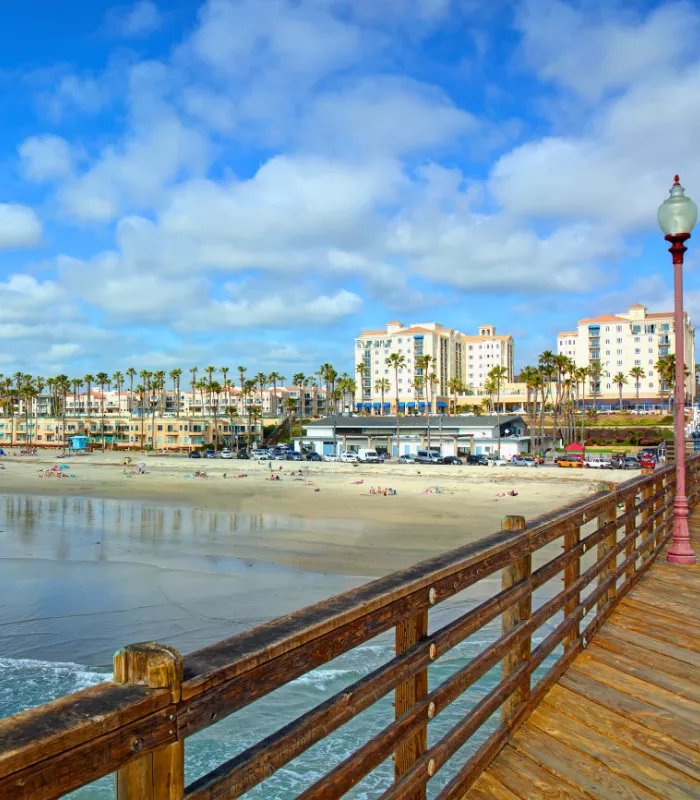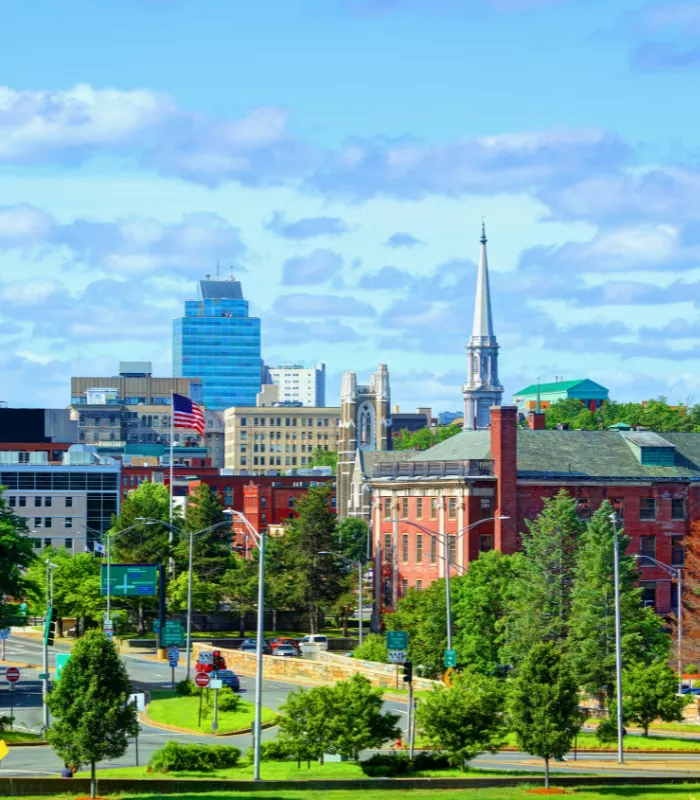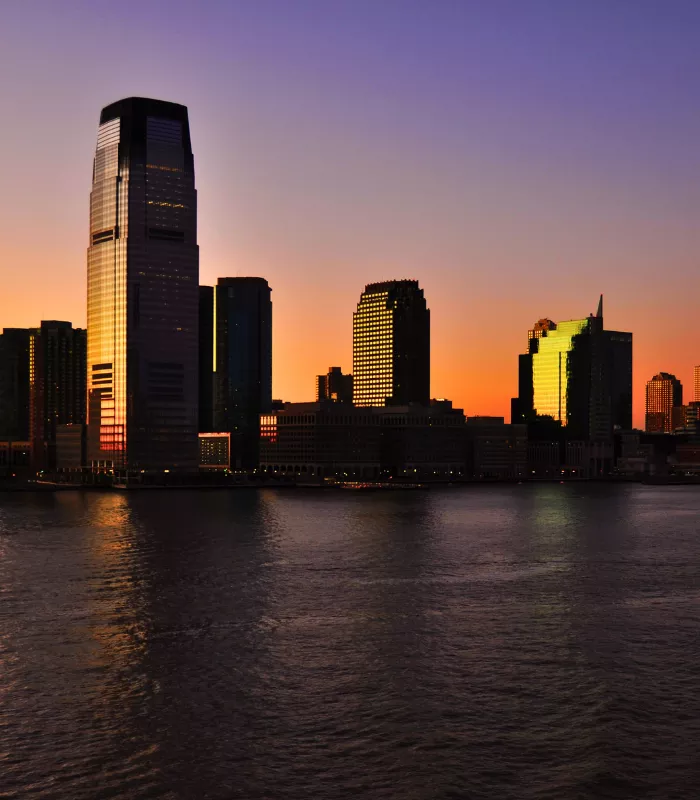Some towns think having a library and a Denny’s counts as cultural diversity.
If you’re 50+ and looking for inspiration, you may want to avoid these places.
We’re talking no theaters, no galleries, and barely a paint night in sight.
Unless bingo at the community center fills your cup, you’re in for a quiet ride.
1. Allouez, Michigan

This small town sits quietly in Michigan’s Upper Peninsula. The population hovers around just a few hundred residents.
But quiet might be an understatement. This place is culturally barren.
With a cultural amenities score of just 1.70 out of 100, there is almost nothing going on here for retirees who want the arts.
The nearest museum is over an hour away by car. Local theaters simply don’t exist.
The vibrant score is also very low. Community events are rare and poorly attended when they do happen.
So don’t expect festivals or museums around the corner. Even basic cultural infrastructure like a decent library or community center is missing.
Seniors looking for book clubs, art classes, or lecture series will be deeply disappointed.
The isolation factor makes this even worse. Public transportation is nonexistent. This forces seniors to drive long distances for any cultural enrichment.
Why it’s on this list: It has the lowest cultural amenities score in Michigan.
2. Springfield, Michigan
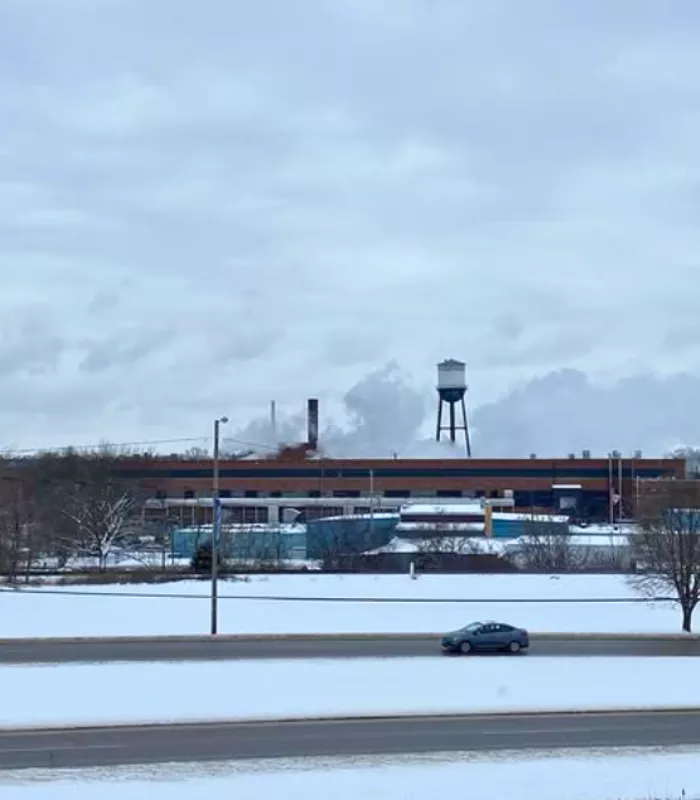
Springfield may look like a charming town. The tree-lined streets and historic buildings create a pleasant facade.
But when it comes to arts and culture, it misses the mark entirely. The downtown area feels empty most days.
It scored only 3.46 out of 100 for urban sophistication. This puts it near the bottom of all measured cities nationwide.
That means very few museums, theaters, or music events. The local high school auditorium hosts maybe two performances per year. Art galleries are completely absent from the landscape.
Not a place for retirees looking for creative fun. Senior centers offer basic activities like bingo and card games.
But enriching cultural programming is virtually nonexistent.
The lack of cultural venues creates a ripple effect. Creative professionals avoid the area. This means fewer workshops, classes, and artistic opportunities for residents of all ages.
Why it’s on this list: Cultural amenities score is critically low.
3. Hartford, Michigan

Hartford is another quiet Michigan town. It sits in the southwestern part of the state near fruit farming country.
But this one isn’t ideal for culture-loving retirees either. The agricultural focus leaves little room for arts development.
Its cultural amenities score is only 10.13 out of 100. This represents a significant gap in available cultural resources.
That puts it far behind cities that offer concerts, art shows, or even a decent local library scene.
The public library operates on limited hours with an outdated collection. Concert venues are completely absent.
Local government doesn’t prioritize cultural development. Budget allocations go toward basic infrastructure rather than arts programs.
This creates a cycle where cultural opportunities remain scarce.
The nearest major cultural attractions require a 45-minute drive to larger cities. For seniors without reliable transportation, this makes cultural engagement nearly impossible.
Why it’s on this list: Few opportunities for cultural engagement.
4. Flint, Michigan
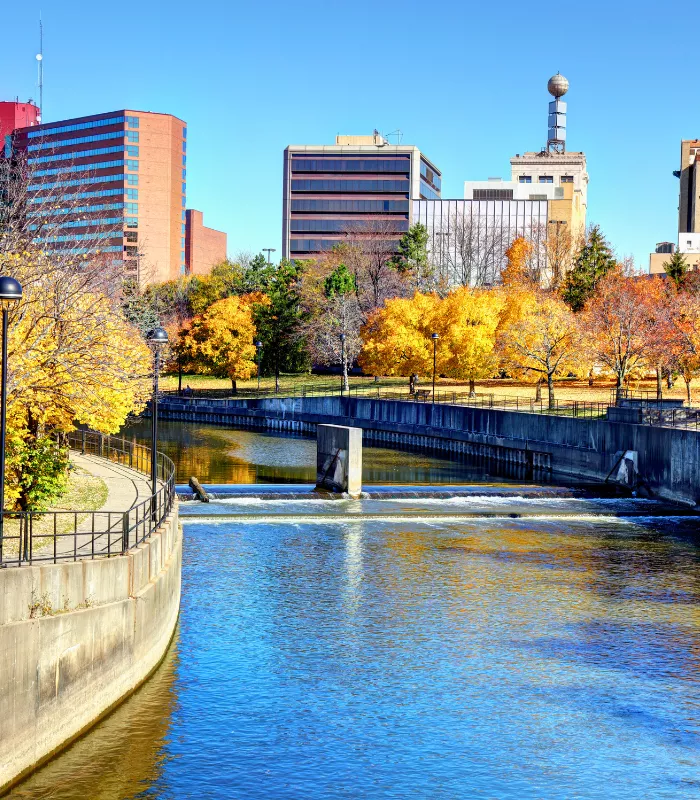
Flint is known for its challenges. The water crisis brought national attention to the city’s struggles.
And lack of culture is one of them. Economic hardship has forced many cultural institutions to close or reduce programming.
Its cultural amenities score is just 17.19 out of 100. This reflects the impact of budget cuts on arts funding over the past decade.
Retirees looking for plays, galleries, or museums might be disappointed. Several historic venues have shut down permanently.
The remaining cultural spaces operate with skeleton staffs and minimal programming.
There’s simply not much to do in that department. Community theater groups struggle to find performance spaces. Art classes are limited and often cancelled due to low enrollment.
The economic challenges create additional barriers. Many seniors live on fixed incomes and cannot afford to travel elsewhere for cultural activities.
This compounds the problem of local cultural poverty.
Why it’s on this list: Very limited access to cultural amenities.
5. Benton Harbor, Michigan
Benton Harbor is located near Lake Michigan. The lakefront location provides beautiful natural scenery.
But don’t expect a thriving arts scene. The tourism industry focuses more on beaches than cultural attractions.
Its urban sophistication score is 21.46 out of 100. This places it well below state and national averages for cultural development.
Not the worst, but far from a retiree’s dream for culture. The downtown area has several empty storefronts where galleries or performance spaces could thrive.
The options are few and far between. A small community center offers basic programming. But comprehensive cultural activities remain elusive.
Seasonal tourism creates an additional challenge. Many businesses cater to summer visitors rather than year-round residents. This leaves locals with limited cultural options during off-season months.
The proximity to larger cities like Kalamazoo offers some hope. But the 30-minute drive creates a barrier for many seniors who prefer local cultural engagement.
Why it’s on this list: Lackluster performance in cultural opportunities.
6. Wayne, Michigan
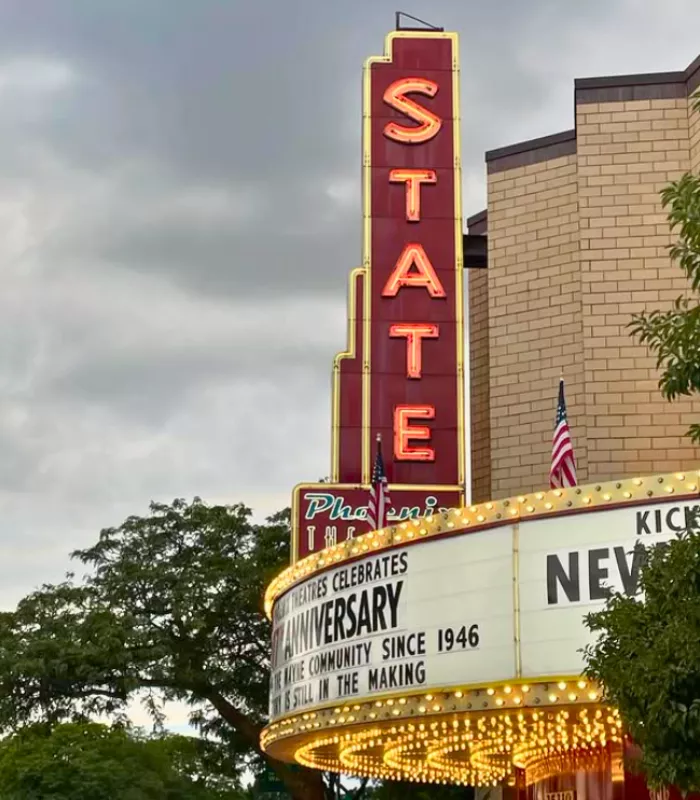
Wayne is a town in southeastern Michigan. It sits between Detroit and Ann Arbor, which should provide cultural advantages.
It does have some community events. The annual summer festival draws modest crowds from neighboring areas.
But its cultural score is only 24.45 out of 100. This suggests that proximity to major cities doesn’t automatically translate to local cultural richness.
That puts it below average for cultural life. Community organizations struggle with volunteer recruitment and funding limitations.
Retirees who love concerts, lectures, and galleries might feel stuck. The local community college offers some continuing education courses.
But comprehensive cultural programming remains limited.
The suburban setting creates additional challenges. Strip malls and residential neighborhoods dominate the landscape.
This leaves little space for cultural venues or artistic gathering places.
Transportation connections to Detroit and Ann Arbor exist but require planning. Many seniors prefer walkable cultural activities within their own community.
Why it’s on this list: Weak cultural score compared to most cities.
7. Detroit, Michigan
Detroit has history and music roots. The city gave birth to Motown and remains home to major cultural institutions.
But surprisingly, it underperforms in culture for retirees. Many venues cater to younger demographics or require significant travel within the sprawling city.
Its cultural amenities score is just 25.18 out of 100.
This shockingly low score reflects accessibility issues rather than absence of cultural institutions.
It also ranks 86th in activities among over 180 cities.
Public safety concerns and transportation limitations affect senior participation in cultural activities.
Retirees may not find the accessible, enriching experiences they expect.
Many cultural venues are located in areas that feel unsafe to older adults. Parking challenges and walking distances create additional barriers.
The renaissance of downtown Detroit benefits tourists and young professionals.
But suburban seniors often feel disconnected from the cultural revival. Senior-specific programming at major venues remains limited.
Despite world-class museums and theaters, the senior experience falls short. Better outreach and accessibility programs could dramatically improve the situation.
Why it’s on this list: Low culture ranking despite being a major city.
8. Hamtramck, Michigan
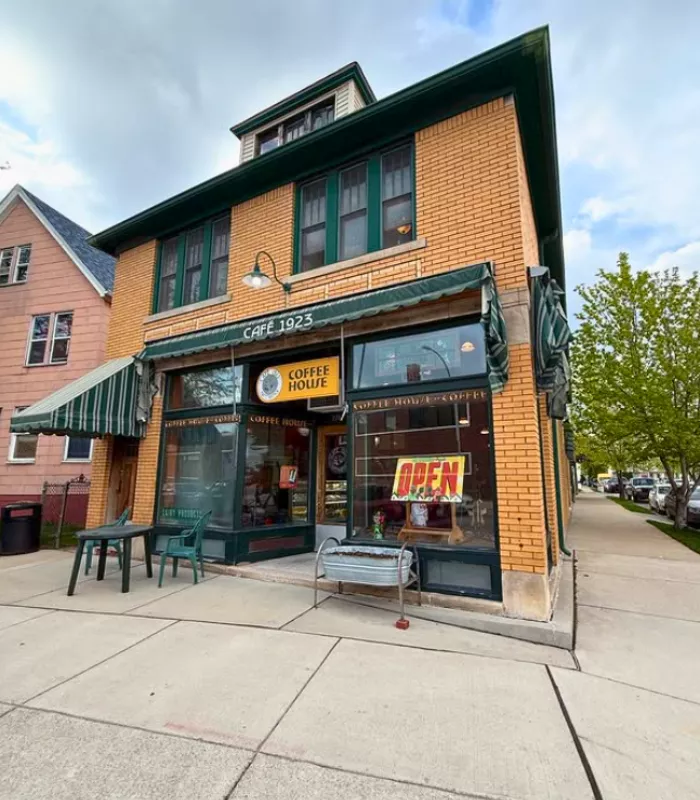
Hamtramck has a rich cultural mix. The diverse population includes Polish, Bangladeshi, and Arab communities with distinct traditions.
But that doesn’t always mean activities for seniors. Cultural events often target specific ethnic groups rather than the broader senior population.
It scored 32.40 out of 100 for cultural sophistication. This suggests that cultural diversity doesn’t automatically create senior-friendly programming.
That suggests few accessible programs for older adults. Language barriers and cultural differences can make some seniors feel excluded from community events.
Retirees seeking enrichment might feel limited. Traditional senior programming competes with ethnic-specific cultural activities for resources and attention.
The small geographic area creates additional challenges. Limited space means fewer venues for diverse cultural programming. Competition for community centers and meeting spaces is intense.
Intergenerational cultural programs could bridge these gaps. But current programming often segregates age groups rather than bringing them together for shared cultural experiences.
Why it’s on this list: Not enough cultural offerings for retirees.
9. Redford, Michigan
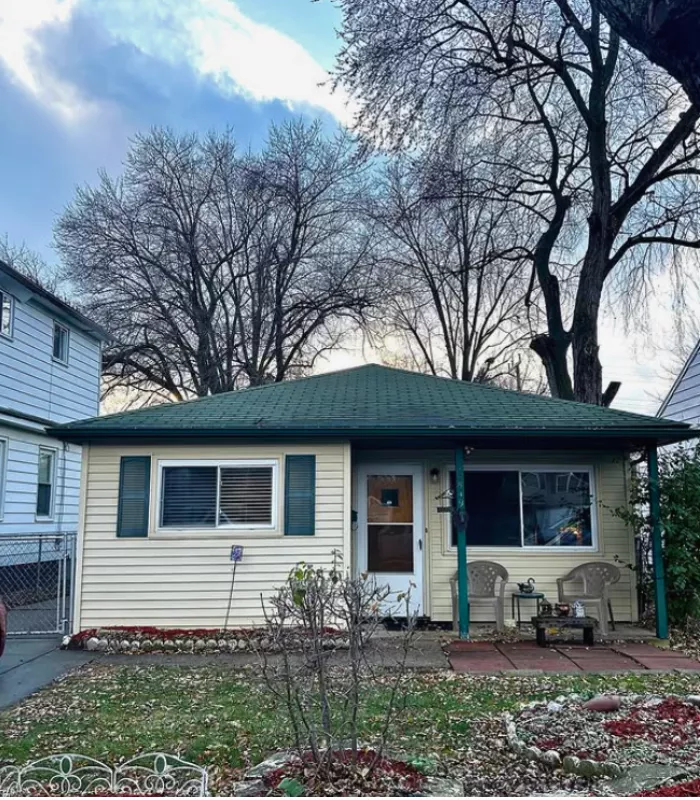
Redford isn’t the worst. The suburban community has decent infrastructure and community services.
But it’s not great either. The focus on residential development leaves little room for cultural venues.
Its score of 47.62 is better than some, but still falls short. This places it in the bottom third of communities nationwide for cultural amenities.
It lacks retirement-specific cultural opportunities. Generic community programming doesn’t address the unique interests and needs of older adults.
This makes it less appealing to older adults looking for enrichment.
The recreation center offers basic fitness classes but limited intellectual or artistic programming.
Redford’s proximity to Detroit could be an advantage. But seniors need local cultural options that don’t require long drives or navigation of busy highways.
The community has potential for improvement. Better coordination between senior services and cultural organizations could create more engaging programming for retirees.
Why it’s on this list: Cultural resources don’t meet retirement needs.
10. Stockton, California
Stockton ranks near the bottom for activities. This Central Valley city struggles with cultural development despite its size.
In fact, it’s 179 out of over 180 cities studied. This dismal ranking reflects chronic underinvestment in arts and cultural infrastructure.
That includes things like museums, theaters, and community events. The few cultural venues that exist operate with minimal programming and limited hours.
Retirees who enjoy arts and culture may feel isolated. The sprawling layout of the city makes it difficult to create walkable cultural districts.
It’s not a great spot to stay active and inspired. Community colleges offer some continuing education courses. But comprehensive cultural programming for seniors remains scarce.
Economic challenges affect cultural development. High crime rates and urban decay discourage investment in arts venues and programming.
The agricultural heritage of the Central Valley could provide cultural themes. But local organizations lack resources to develop heritage tourism or cultural programming around this identity.
Why it’s on this list: Almost no cultural activities for retirees.
11. Bakersfield, California
Bakersfield is known for country music roots. The city produced famous musicians and maintains some connection to that heritage.
But that doesn’t mean retirees will find cultural joy here. The music scene caters more to bars and younger crowds than senior-friendly venues.
It ranks 178 out of over 180 cities for activities. This near-bottom ranking reflects a serious lack of cultural infrastructure and programming.
There’s not much in terms of art galleries, lectures, or concerts. The few cultural venues struggle with funding and community support.
It’s mostly quiet, and not in a good way.
The oil industry dominance has historically overshadowed investment in arts and culture.
Hot summers keep many seniors indoors during peak cultural season. Air-conditioned venues are limited, reducing options during the warmest months.
The Hispanic cultural heritage offers potential for programming. But language barriers and resource limitations prevent full development of bilingual cultural offerings for seniors.
Why it’s on this list: Very low ranking for activities and cultural life.
12. Riverside, California
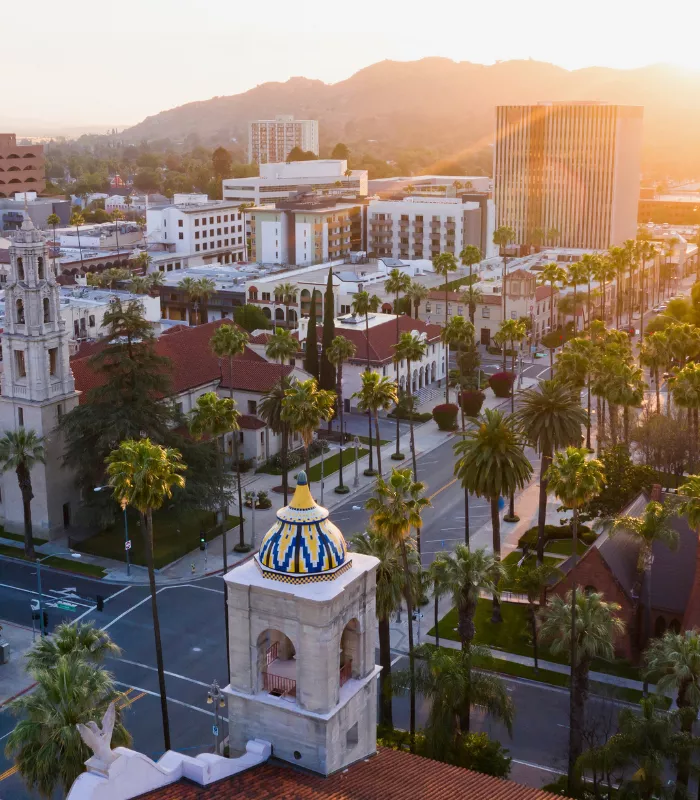
Riverside has warm weather and mountain views. The Southern California location should provide advantages for outdoor cultural activities.
But for retirees wanting culture, it may disappoint. The suburban sprawl makes it difficult to create concentrated cultural districts.
It ranks 162 out of over 180 cities for activities. This poor ranking is surprising given the city’s size and location advantages.
This includes limited access to cultural attractions like museums or events. The few existing venues struggle with attendance and community engagement.
A bit dull for curious minds. University of California Riverside provides some cultural programming. But town-gown connections remain weak for senior participation.
Traffic congestion makes travel to Los Angeles cultural venues challenging. Many seniors prefer local options that don’t require freeway driving.
The diverse population offers potential for multicultural programming. But coordination between different community groups remains limited, reducing opportunities for shared cultural experiences.
Why it’s on this list: Lacks strong cultural offerings for older adults.
13. Bridgeport, Connecticut
Bridgeport is the largest city in Connecticut. Its size and industrial history should support a vibrant cultural scene.
But bigger doesn’t always mean better for culture. Urban decay and economic challenges have reduced cultural investment over decades.
It ranks 151 out of over 180 for activities. This disappointing ranking reflects the gap between potential and reality in cultural programming.
Theaters, galleries, and enriching programs are hard to come by. Many historic venues have closed or reduced programming due to financial constraints.
Not ideal for retirees seeking inspiration. Public safety concerns limit evening cultural activities when many events traditionally occur.
The proximity to New York City creates brain drain. Cultural professionals often commute to Manhattan rather than developing local programming.
Bridgeport’s waterfront location offers potential for cultural development. But revitalization efforts focus more on commercial development than arts and cultural venues.
Why it’s on this list: Poor activity score limits cultural opportunities.
14. Wichita, Kansas
Wichita has a lot of space and sky. The prairie setting provides natural beauty but limited cultural infrastructure.
But not much going on culturally. The aviation industry dominance hasn’t translated into diverse cultural development.
Its activity rank is 136 out of over 180 cities. This middle-to-low ranking reflects limited investment in senior-oriented cultural programming.
Retirees looking for stimulating things to do may be left wanting. Community theaters exist but operate with minimal programming and volunteer staffing.
It’s more quiet suburb than cultural hub. The spread-out nature of the city makes it difficult to create walkable cultural districts.
Harsh weather limits outdoor cultural activities for several months each year. Indoor venue options remain limited for senior programming.
The Native American heritage of the region offers cultural programming potential. But development of heritage-based programming remains minimal and underfunded.
Why it’s on this list: Cultural activity options are too limited.
15. Oceanside, California
Oceanside sounds lovely by name. The coastal location and mild climate create an appealing setting for outdoor activities.
But retirees may not find much to do there. The focus on beach tourism overshadows investment in cultural infrastructure.
It ranks 127 out of over 180 for activities. This ranking reflects the gap between natural amenities and cultural programming.
That means few chances to catch a play, visit an exhibit, or join a class. The few cultural venues struggle with consistent programming and community support.
Pretty views, but not much else. High real estate costs make it difficult for arts organizations to maintain affordable venue space.
Military presence from nearby bases could provide cultural programming opportunities. But civilian-military cultural collaboration remains limited.
The Hispanic cultural heritage offers programming potential. But language barriers and resource limitations prevent comprehensive development of bilingual senior programming.
Why it’s on this list: Culture and creativity aren’t strong suits here.
16. Warwick, Rhode Island
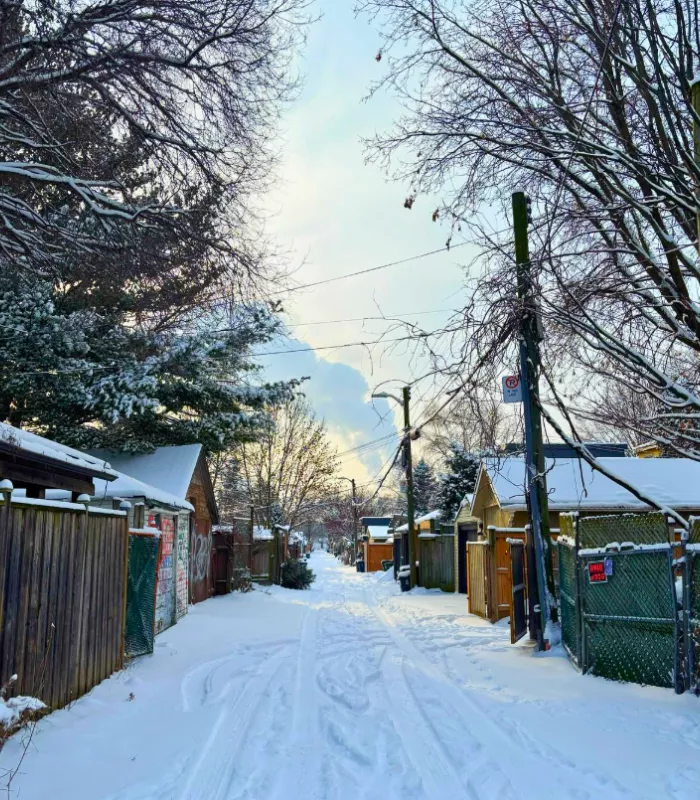
Warwick is a coastal city. The New England setting provides historic charm and scenic beauty.
But arts and culture? Not its strength. The suburban layout prioritizes residential areas over cultural venues.
It sits at 123 out of over 180 for activities. This ranking is disappointing given Rhode Island’s rich cultural heritage.
There’s not much in the way of programs, galleries, or events for seniors. Community organizations operate with limited budgets and volunteer resources.
Nice town, but not very vibrant. The proximity to Providence could provide cultural advantages. But transportation barriers limit senior access to metropolitan cultural offerings.
Shopping malls and chain restaurants dominate the commercial landscape. This leaves little space for independent galleries, theaters, or cultural venues.
The coastal location offers potential for maritime heritage programming. But development of senior-oriented cultural activities around this theme remains minimal.
Why it’s on this list: Ranked low in activities that include cultural fun.
17. Worcester, Massachusetts
Worcester has museums and parks. The city maintains several cultural institutions with historic significance.
But it still ranks only 116 out of 180 cities for activities. This ranking suggests that having cultural institutions doesn’t guarantee senior-friendly programming.
It may be known for some attractions. The Worcester Art Museum and Mechanics Hall provide excellent cultural venues.
But the overall experience falls short. Many cultural institutions focus on school groups and tourists rather than local seniors.
Retirees might feel underwhelmed here. Programming schedules often conflict with senior preferences for daytime activities and accessible venues.
The college town atmosphere creates cultural activity. But student-oriented programming may not appeal to older adults seeking age-appropriate enrichment.
Worcester’s industrial heritage offers cultural programming potential. But development of heritage tourism and related senior programming remains underdeveloped.
Why it’s on this list: Cultural scene isn’t strong enough to support active retirement.
18. San Bernardino, California
San Bernardino is sunny and suburban. The Southern California location provides year-round outdoor activity potential.
But its cultural score says otherwise. Economic challenges and urban decay have reduced cultural investment over time.
It ranks 115 out of 180 cities in activities. This poor ranking reflects chronic underinvestment in arts and cultural infrastructure.
That includes low access to events, classes, and art spaces. The few existing cultural venues operate with minimal programming and limited community support.
Retirees might find the days slow and quiet. High crime rates in some areas limit evening cultural activities when many events traditionally occur.
The diverse population offers multicultural programming potential. But coordination between different community groups remains weak, reducing shared cultural opportunities.
California State University San Bernardino provides some cultural programming. But town-gown connections for senior participation remain underdeveloped.
Why it’s on this list: Activity levels and cultural choices are too limited.
19. Jersey City, New Jersey
Jersey City is close to New York. The proximity to Manhattan should provide enormous cultural advantages for residents.
But it doesn’t share the same cultural energy. High costs and rapid gentrification have displaced many local cultural institutions.
It ranks 102 out of 180 cities for activities. This ranking is disappointing given the metropolitan location advantages.
Retirees may find options lacking despite its location. The focus on young professionals has reduced programming aimed at older adults.
You’ll need to travel for most enrichment. Public transportation to Manhattan exists but can be challenging for seniors with mobility limitations.
Local cultural venues struggle with high real estate costs. This forces many organizations to relocate or reduce programming significantly.
The diverse immigrant population offers multicultural programming potential. But language barriers and resource limitations prevent comprehensive development of senior-oriented cultural offerings.
Why it’s on this list: Not enough cultural fun within the city itself.
20. Newark, New Jersey
Newark is another big city with small cultural output. The urban setting should support diverse cultural programming for all age groups.
It ranks 78 out of 180 cities for activities. This middle-tier ranking reflects missed opportunities given the city’s size and resources.
Not terrible, but still not great. Public safety concerns limit evening cultural activities when traditional programming occurs.
Many retirees want daily ways to stay creative. Community centers offer basic programming but lack comprehensive cultural enrichment options.
Newark doesn’t offer that in full. Transportation within the city can be challenging for seniors seeking cultural activities.
The proximity to New York City creates both opportunities and challenges. Many cultural professionals commute to Manhattan rather than developing local programming.
Newark’s rich jazz heritage offers programming potential. But development of heritage-based cultural activities for seniors remains limited and underfunded.
Why it’s on this list: Cultural activities fall short for the retiree crowd.
- have-clothes-will-travel.com – 12 of the Best and Worst Places To Retire in the U.S., According to a New Study
- finance.yahoo.com – 6 Cities You Should Avoid If You’re Retiring in 2025
- financebuzz.com – 15 Worst Cities for Retirees in the Northeast
- awjlaw.com – The Best and Worst States for Retirement | 2025 Study
- kiplinger.com – Worst Places to Retire in the US
